350 years of banking history
As we celebrate our 350th anniversary, we look back at seminal moments in the bank's history.
Richard Hoare is made a freeman of the Worshipful Company of Goldsmiths and starts to trade as a goldsmith-banker at the sign of the Golden Bottle in Cheapside. Early customers include Samuel Pepys and Charles II’s widow, Catherine of Braganza.

The business moves to its current site on Fleet Street.

18th century view of Fleet Street, by William Cave. (The bank is on the left-hand side, opposite the clock.)
Richard’s son ‘Good Henry’ becomes a partner. Richard is knighted by Queen Anne in 1702.

Henry Hoare I, holding plans for Stourhead.
Richard Hoare is elected Lord Mayor of the City of London.
‘Good Henry’ co-founds Westminster Hospital ‘to provide poor sick people… with necessary food and physic during illness.’
Henry Hoare II is made a partner of the bank, aged 19. His successful 60-year tenure at the helm of the business, together with the creation of a world-famous garden at Stourhead in Wiltshire, later earns him the sobriquet ‘Henry the Magnificent’.

Temple of Flora and lake at Stourhead, by Francis Nicholson c. 1818.
Richard Hoare, brother of ‘Henry the Magnificent’, is made partner. 15 years later, as Lord Mayor of London, he is charged with the defence of the City during the 2nd Jacobite Uprising.

Sir Richard Hoare, 2nd Knight, mobilising the local guard, by John Wootton c. 1746.
The bank issues its first printed cheque.

Early ‘Messrs. Hoare & Co.’ printed cheque dated 4th March 1763.
Henry Hoare of Mitcham is made partner. His strict management of the bank’s affairs during the American and Continental Wars sees deposits treble from £781,000 to £2,216,000.
On Henry the Magnificent’s death, Richard of Barn Elms becomes senior partner at the bank; Stourhead passes to Henry’s grandson, Richard Colt Hoare, on condition that he leaves the bank.
Charles Hoare, who gave his name to
C. Hoare & Co., engages John Nash and Humphrey Repton to design Luscombe Castle in South Devon. (Sir David Hoare, 10th-generation partner and former chair of the bank, and his son Simon, a current partner, live on the estate today.)

Private banks lose their monopoly on deposit banking. Many are sold or converted into joint stock banks, but
C. Hoare & Co. retains its independence.
A new banking house, designed by architect Charles Parker (a former pupil of Jeffry Wyatville), is erected on Fleet Street at a cost of £21,000.
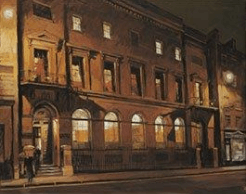
37 Fleet Street by James Hart Dyke, 2001.
Peter Richard Hoare jnr and Henry Hoare of Staplehurst enter into a partnership agreement despite fierce personal differences. While the brothers-in-law contrive to meet as seldom as possible, their 14-year partnership is markedly successful, with deposits reaching £2,515,000.
Peter’s son-in-law, Algernon Strickland, enters the partnership – a steadying influence during a calamitous period in which the sons of Henry and Peter burden the business with debt and scandal.
The partners add personal capital to strengthen the bank’s position and the balance sheet is published for the first time.
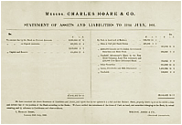
1891 balance sheet for Messrs. Charles Hoare & Co.
Temporary balconies are erected at 37 Fleet Street, enabling staff and customers to view Queen Victoria's Diamond Jubilee procession.
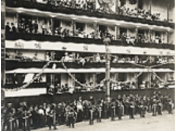
Henry Hoare of Iden’s son, Harry of Ellisfield, becomes the senior partner of the 8th generation and oversees a period of retrenchment.
Women are employed at the bank for the first time to replace staff called up to fight in the Great War. Messrs. Hoare Trustees is established.
The partners convert the bank into a private unlimited company. Deposits stand at the same level as in 1852.
Most bank staff are evacuated to Ovington Park, Hampshire, to escape the Blitz in 1940. In May 1941, Fleet Street is caught up in a Nazi bombing raid; Bertram Hoare leads firefighting with water from the bank’s artesian well.
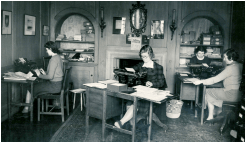
April 1940 at Ovington Park, Hampshire
Henry Cadogan becomes the first of the 10th generation of partners. Deposits now stand at £9,034,000 and the bank employs 100 staff.
Sir Derick Hoare becomes the third partner to serve as Lord Mayor of London.
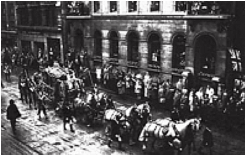
The bank issues its own card to support cheques up to the value of £30 and three years later joins the nationwide cheque guaranteed scheme.
The first bank-wide computer system is installed.
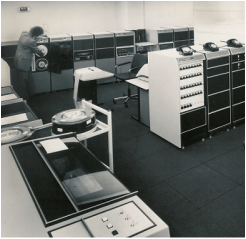
The Golden Bottle Trust is established to further the philanthropic aims of the Hoare family and the bank.

A Visa card is introduced which, in addition to providing credit, enables cash withdrawal from ATMs.
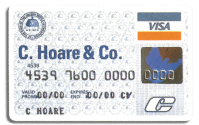
Alexander S Hoare becomes the first of the 11th generation of partners.
Venetia Hoare becomes the first female partner.
The bank appoints its first ‘non-family’ chairman.
C. Hoare & Co. is the first UK bank to launch a Donor-Advised Fund, the Master Charitable Trust
C. Hoare & Co. opens its first regional office in Cambridge.
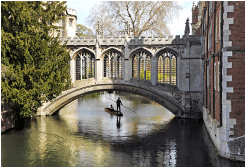
The bank increases its regional presence in the South-West (Bristol/Bath), North-East (Yorkshire/Leeds) and North-West (Manchester and surrounding area).
Diana Brightmore-Armour becomes the first female CEO in the history of the bank.
Amy Rodwell becomes the first 12th-generation partner.
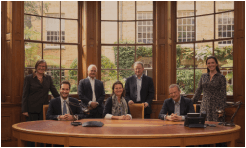
The bank celebrates its 350th anniversary.



